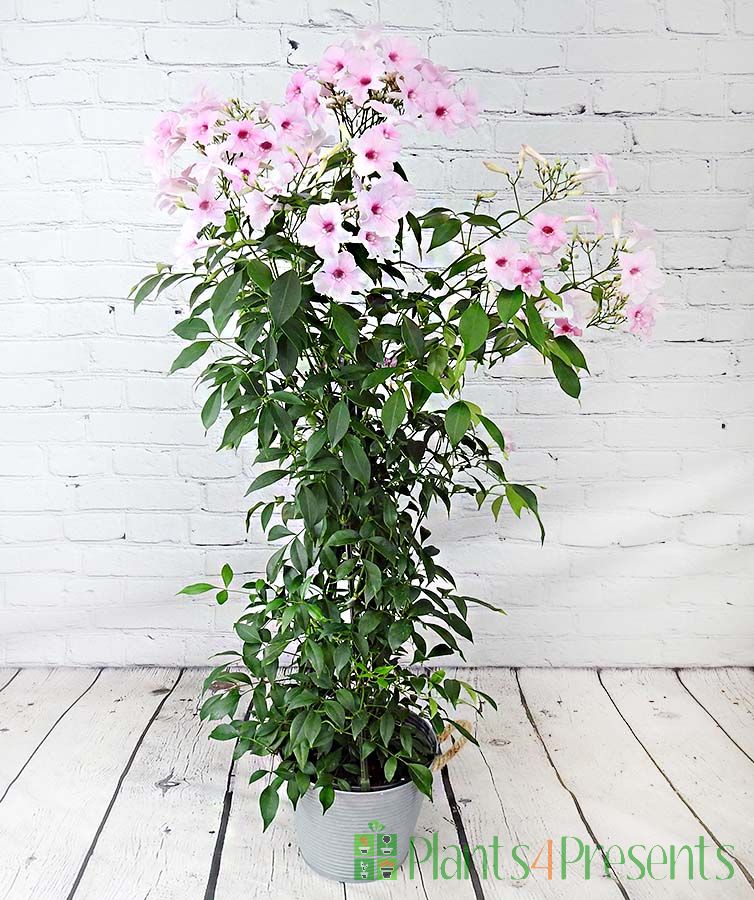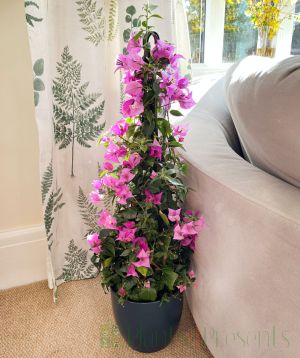Marshmallow Flower
Out of stock


- Unusual flowered vine with a marshmallow fragrance
- Easy to care for house plant
- FREE next or named day delivery
Sorry we don't have any Marshmallow Flower available at the moment, but we do have lots of other lovely flowering plants available for next day delivery.
Pandorea jasminoides or Bower Vines are also known as the Marshmallow Flower because of the colour of their pretty trumpets which also actually smell sweet, rather like marshmallows! These unusual tropical vines make a surprisingly easy going houseplant will produce fragrant pink blooms in succession in a sunny spot. Our marshmallow flower plants are ready to order online today, available with Next Day Delivery.
 4.9/ 5
14 reviews
4.9/ 5
14 reviews


The delivery was on time and the recipient thought it was beautiful, unusual ( Marshmallow flower ) and was very happy. Well done!

Beautiful well cared for plant

Lovely pretty flowers

Beautiful healthy plant went down excellent as a gift

Excellent quality and value

Beautiful plant ????

Nicely perfumed

It was a present and my friend loves how unusual it is

Beautiful plant as described

Very good.

These instructions are sent with the plant gift
Pandorea jasminoides, or Bower Vines, are known as Marshmallow Flower because of the colour of their pretty trumpets which also actually smell sweet, rather like marshmallows! These unusual tropical vines make a surprisingly easy-going houseplant and will produce fragrant pink blooms in succession in a sunny spot.
Your plant will be happy in a conservatory, or a well-lit window or porch. However, try to avoid strong direct sunlight if possible and place it a little way back from the window glass to avoid scorching. In milder parts it will also be happy to spend the summer on a patio or balcony – but they do need to be protected from frost.
Whilst your plant is in a small pot you will need to water regularly especially if in a warm spot. However, don’t worry if you let it dry out between watering – the compost does not need to be wet, just slightly damp. Whilst flowering, it will also benefit from a general-purpose feed added to the water every few waters.
Cut off dead flowers to encourage more buds and train the plant upwards – it is a climber by nature. As the plant puts on more growth, it can be re-potted into a larger pot with rich potting compost.
Problem solving
Brown edges or tips to the leaves is a sure sign of scorching, try moving back from any window glass to a slightly less sunny spot.
Yellow leaves and some leaf drop in the winter months is perfectly natural and a response to the lower light levels, reduce the amount you are watering to ensure the soil does not get waterlogged and expect fresh growth in the spring.
Yellow leaves in the spring or summer, are normally a sign that your plant is lacking nutrients. If your plant is looking a little large for its pot, now would be a good time to repot into fresh compost. Alternatively, a good dose of general house plant feed should perk it up.









